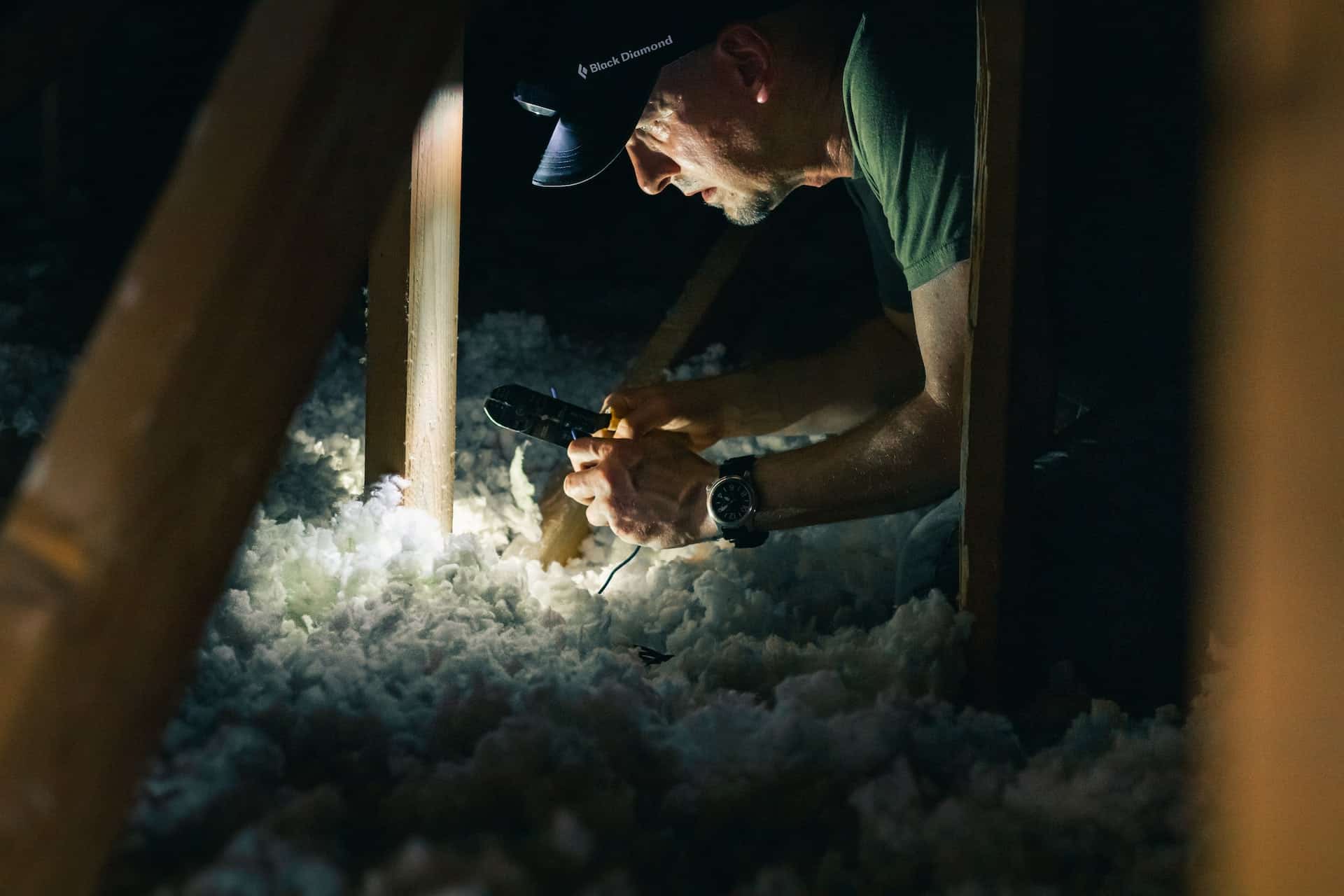Unfortunately, this type of insulation can cause some serious issues and be a big headache for property owners and buyers. From damage to the building to making a property unmortgageable, spray foam insulation comes with a whole host of risks property owners need to be aware of.
Will spray foam insulation stop you from getting a mortgage? Yes, in many cases, spray foam may limit how willing mortgage lenders are to give you an offer. Spray foam comes with a high risk of damage to a building due to reduced ventilation, increased condensation and damage to roof timbers. Therefore many mortgage lenders view properties with spray foam insulation as not worth the risk.
Read on to find out more about the risks of installing spray foam insulation and what other options you have to increase the energy efficiency of your property.
Get in Touch With Our ExpertsWhat is Spray Foam Insulation?
In recent years spray foam insulation has become increasingly popular with homeowners in the UK. Unfortunately, this type of insulation can cause serious issues and create a big headache for property owners and buyers.
Spray foam insulation, is, as the name suggests, a foam covering sprayed on the underside of roof coverings. The aim is to provide a thick insulation to improve the thermal performance of a house.
Is Spray Foam Insulation Safe?
In short, no. When applied to the underside of roof coverings, spray foam insulation encapsulates the roof timbers, reducing ventilation to the roof space and increasing condensation as it alters the due point of the structure (the temperature at which moisture within the air will form into a liquid and create condensation).
Additionally, imagine the roof leaks. The difficulty of spotting a leak amidst all the sprayed foam could mean timbers are left getting wet for a significant period of time, leading them to rot and decay with no opportunity to dry out. This rotten wet timber could also lead to insect attack, fungal decay, and instability of the roof structure.
Does Spray Foam Insulation Stop You Getting a Mortgage?
The risk of problems developing is so high that many mortgage lenders are now refusing to lend on properties with spray foam insulation, and we’ve rarely viewed an installation which hasn’t had adverse effects in due course. The same goes if you’re wanting to finance the property in any way, whether you’re applying for a mortgage, remortgaging, or applying for equity release.
It is always worth getting impartial advice before making alterations or new installations in your property. The salespeople unfortunately don’t provide any warning of the potential harm such installations pose or give a balanced view of the product. And why would they? It’s their job to sell these products and only these products. They take no onward liability and likely receive commission for each sale, so there’s no incentive to care about the owner, the building or trying to sell the property in 5 years’ time.
Having balanced, independent, expert advice will save you stress, time and money in the long run. Too often we’re left explaining the dangers and damage caused by spray foam insulation long after the fact, and when the house is unmortgageable and expensive remedial work is required. Get in touch with our team of honest surveyors for a RICS Level 3 or RICS Level 2 survey.
What is the Guidance On Spray Foam Insulation?
In recent years The PCA (Property Care Association) and RPSA (Residential Property Surveyors Association) led a joint consultation to address the issues with spray foam insulation, aiming to provide clarity to surveyors and valuers about how to report on the condition of a roof with spray foam applied.
One of the key conclusions arising from this consultation was “It is unlikely that a surveyor undertaking a valuation or a condition survey will be able to provide any advice relating to the condition or life expectancy of the roof structure where the installation of PU foam is not supported by detailed technical information.”
The required level of technical information is considerable.
In most situations the surveyor will be unable to comment on the condition of the timber roof structure without lengthy invasive investigations, often resulting in partial or full removal, and irreparable damage to the insulation or roof coverings.
This has led to the LABC (Local Authority Building Control) taking the decision not to accept the application of spray foam installations (even those with third party accreditation such as BBA) under their warranty schemes.
Perhaps this clear guidance and market position have come too late as no doubt over the past few years many homeowners will have had spray foam insulation systems of some description installed. This has no doubt increased exponentially over the last 12 months as home owners search for answers to the energy crisis within a context of poorly thermal performing housing stock.
The sale of these systems often takes advantage of the lack of awareness and knowledge of building owners and the absence of experienced specifiers and designers within the market. It’s important to be aware that not all solutions advertised are sold in the property owner’s best interest.
To see more from the Property Care Association (PCA) on their findings in regard to spray foam insulation, visit their website.
What Can You Use Instead Of Spray Foam To Make Your Home Energy Efficient?
In recent years much research has been undertaken on how to improve energy performance in historic and traditional buildings. This suggests buildings and any adaptations should be assessed holistically.
As with any change, it’s important that owners and occupiers understand that buildings, traditional and historic buildings in particular, should be operated in a certain way and to disturb this equilibrium without proper consideration can lead to serious issues developing over time.
These systems, among others, are sold as a simple and easy solution to solve what is a complex problem which needs careful consideration on a case by case basis. A short term solution often leads to long term problems.
There are a number of other options for improving energy efficiency, including breathable and permeable insulations and the use of natural building materials which don’t inhibit the movement of moisture in the building. Seeking independent advice can ensure you understand the construction of the building, and how to sympathetically improve its energy efficiency.
How Can Our Surveyors Help?
Whilst spray foam insulation may seem like a quick fix, the risk of damage to a property and likelihood of mortgage lenders to not lend against the property, makes it a material to steer clear of. If you’re looking to improve the energy efficiency and thermal performance of your property, get in touch with us here for some independent expertise that you can rely on.
To learn how we write and review our content for accuracy, take a look at our Editorial Policy.
Spray Foam FAQs
Does Spray Foam Devalue Your House?
In short, yes spray foam does devalue your house. By installing it, you reduce the amount of airflow in your roof, which can lead to issues including mould, wood rot, and overall reduced structure stability. Each of these issues are a risk to mortgage lenders, which may limit how much your house is valued at.
How Do You Remove Spray Foam Insulation?
Spray foam removal is something we wouldn’t recommend attempting to do yourself! A professional will be able to safely cut away the foam from your roof or other construction materials, whilst avoiding electrical wires or parts of your home structure. Removing spray foam is likely to cost you around £5000, depending on how much needs to be removed.
Can Spray Foam Rot Your Roof?
Yes. As we mentioned above, spray foam isn’t a breathable material, which decreases the amount of airflow in your roof. Reduced air flow leads to damp, mould, and rotting of the wood in your roof.




